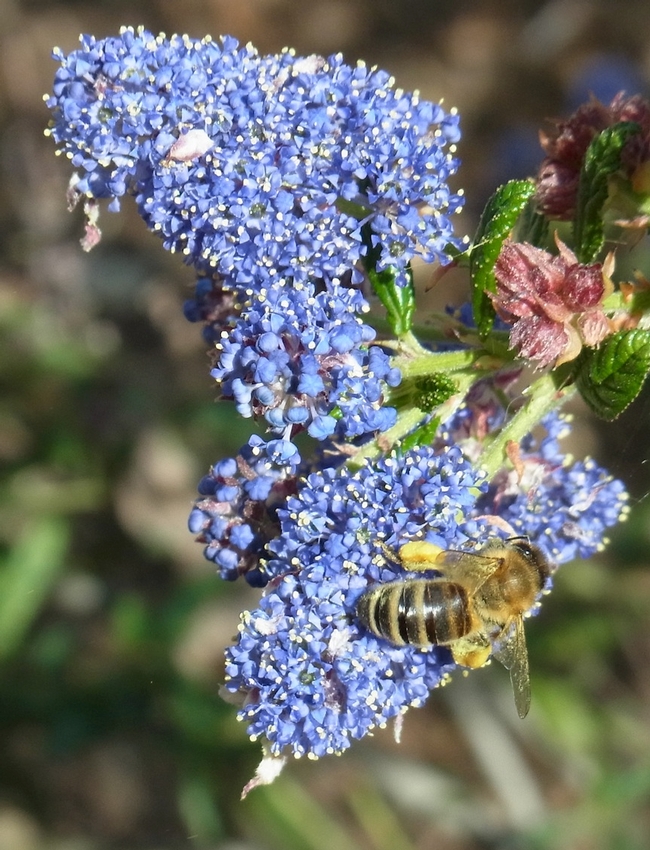One of the most beautiful and valuable plants for the California bee garden is ceanothus, also called California lilac or blue blossom. Most of the plants in this amazingly diverse genus are California natives. So admired are these plants by botanists and horticulturalists that they have their own book: Ceanothus by Davis Fross and Dieter Wilken (Timber Press, 2006, 272 pp.) Not to mention that bees love them!
The Haven's ceanothus species have been selected to provide flowers from January through September. March, however, is when many species and cultivars begin to bloom, so ceanothus is our March bee plant of the month. With a few exceptions, most ceanothus produce blue to purple flowers and are evergreen. They generally need full sun, well-drained soil, and limited summer water, although those tolerant of other conditions are noted below. If you come to the garden to see bees, check out these plants first. Many have a fragrance like honey.
The Haven's ceanothus include, listed in order of bloom:
Ceanothus ‘Valley Violet', Ceanothus maritimus ‘Valley Violet'. Full sun to light shade, 2 feet tall to 4 feet wide. Purple flowers from January to March borne on the full length of the stem. Away from the coast, this one does best with afternoon shade and some supplemental water (every 2 to 3 weeks). Tolerates a variety of soils.
Ceanothus ‘Ray Hartman', Ceanothus arboreus x thrysiflorus var. griseus. Full sun to light shade, 10 feet wide to 20 feet tall. Rosy buds open to purple flowers in February and March; the easiest ceanothus to grow and the most tolerant of garden conditions (i.e. regular watering and clay soil), although it will survive on normal rainfall alone. Can be shaped into a small tree.
Ceanothus ‘Julia Phelps', Ceanothus ‘Julia Phelps'. Full sun, 6 feet tall to 8 feet wide. Reddish buds open to small, deep purple flowers from February to April. Does best in coastal locations, and survives on normal rainfall alone.
Ceanothus ‘Concha', Ceanothus impressus x papillosus. Full sun, 6 feet tall and wide. Pink flower buds open to intensely deep purple flowers in March. Tolerates some summer water and clay soils, although it will survive on normal rainfall alone.
Ceanothus ‘Frosty Blue', Ceanothus impressus x thyrsiflorus var. griseus. Full sun, 10 feet wide to 12 feet tall. Buds with a frosted white appearance open to purple flowers in March to May. Tolerant of garden conditions (i.e. regular watering and clay soil), although it will survive on normal rainfall alone.
Buckbrush, Ceanothus cuneatus. Full sun, 4 to 5 feet tall and wide. White flowers in April. Survives on normal rainfall alone.
Ceanothus ‘Skylark', Ceanothus thyrsiflorus ‘Skylark'. Full sun to shade, 4 to 6 feet tall and wide. Light blue flowers in May to June. Does well in a variety of climates and soils. Survives on normal rainfall alone.
Ceanothus ‘Topaz', Ceanothus x delilianus. Full sun to light shade, 4 to 9 feet tall and wide. Blue flowers from June to September. This plant is the cross between a Mexican/Guatemalen native and a New Jersey native. A deciduous plant that needs regular water.
Attached Images:



